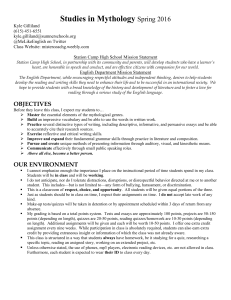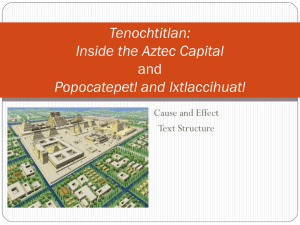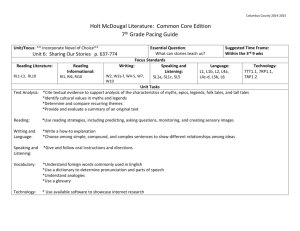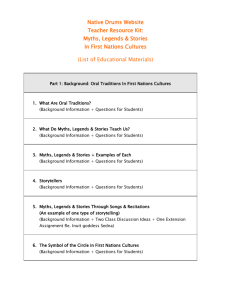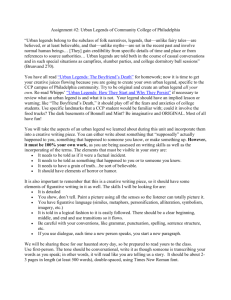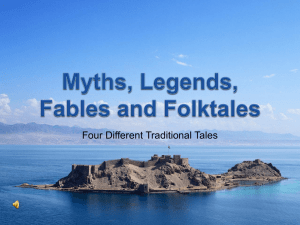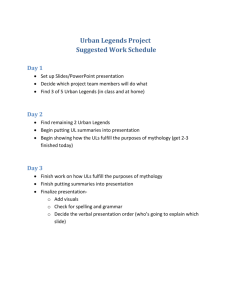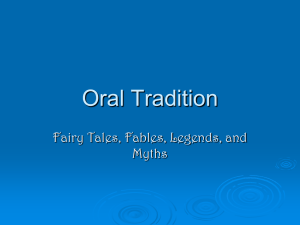Northern Myths and Legends • Indo-European and Germanic Peoples
advertisement
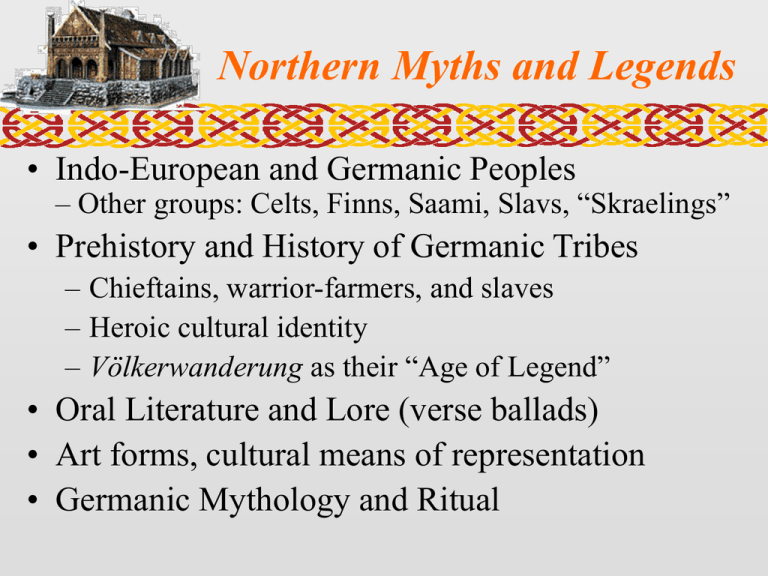
Northern Myths and Legends • Indo-European and Germanic Peoples – Other groups: Celts, Finns, Saami, Slavs, “Skraelings” • Prehistory and History of Germanic Tribes – Chieftains, warrior-farmers, and slaves – Heroic cultural identity – Völkerwanderung as their “Age of Legend” • Oral Literature and Lore (verse ballads) • Art forms, cultural means of representation • Germanic Mythology and Ritual Northern Myths and Legends • History and Legend • Transformation of Oral to Written Literature: – – – – – Pagan to Christian world view Public to private consumption of literature Familial/Tribal to Courtly context of literature Flexible narration to fixed and polished text Personal History to impersonal, factual history • Massive changes in the understanding and expectations of literature. Northern Myths and Legends • Myth • The World of the Gods, the Cosmos, the Beginnings and Endings of all Things • Legend • The World of Heroes, of Kingdoms and Dynasties, Superhuman Deeds and Events • Saga • The World of Men, of Families and Settlements, Feuds and Marriages, Battles and Voyages Northern Myths and Legends • • • • Medieval History (1100-1400) New Society, new culture, new religion Old Cultural Traditions still important! Germanic Legends adapted as Literary Epics for new audiences: • Volsunga Saga – Icelandic, local, prose • Nibelungenlied – German, courtly, verse Northern Myths and Legends • Early Modern Period (1400 – 1600) • New Society, new culture, new religion! • Printing Press (1450) – new understanding of literature and its social role and value. • Folklore can also generate legends, but of a very different kind: • Faust and Eulenspiegel – simple prose, bourgeois audience, contemporary concerns, moral utility now important! Northern Myths and Legends • • • • • Romantic Period (1790 – 1850) German Cultural Identity and Nationalism German Language and Literature Brothers Grimm and Folklore Studies Fairy Tales as the “Voice of the People” – Lower Class uncorrupted by foreign influences, reflect ancient cultural traditions and values, preserve “unique” German lore in changing social and political environment. Northern Myths and Legends • • • • Romantic Period (cont.) German Nationalism (Bismark, 1871) Cultural Focus and National Identity Political Use of Legend and Myth • Hermann, the Germanic Hero! • Richard Wagner and The Ring Cycle • Nazi Appropriation of Legendary Material in the Third Reich. Northern Myths and Legends • Modern Period • New society, new culture, new media! • Entertainment and Escapist Fantasy: • “The Hobbit” and Shire – innocence and virtue. • “Conan the Barbarian” – sex and violence. • New Media allow new forms of presentation of ancient cultural material: comic books, animation, silent and feature films, board games, and interactive computer games. Northern Myths and Legends • Review Session on Final Class Day Monday, 27 April 2009 1:00 – 1:50 p.m. in Rm. 105 • Final Exam Thursday, 30 April 2009 1:30 – 4:00 p.m. in Rm. 105
